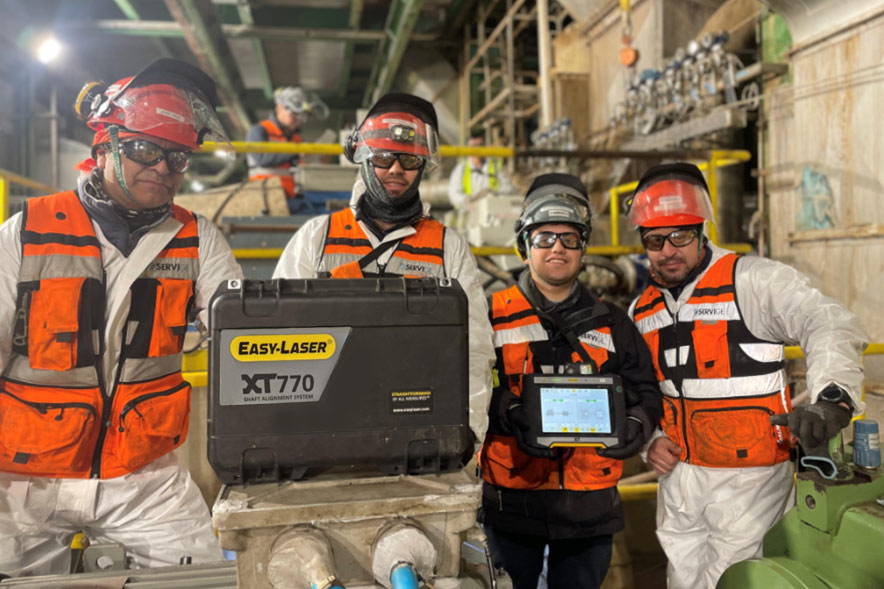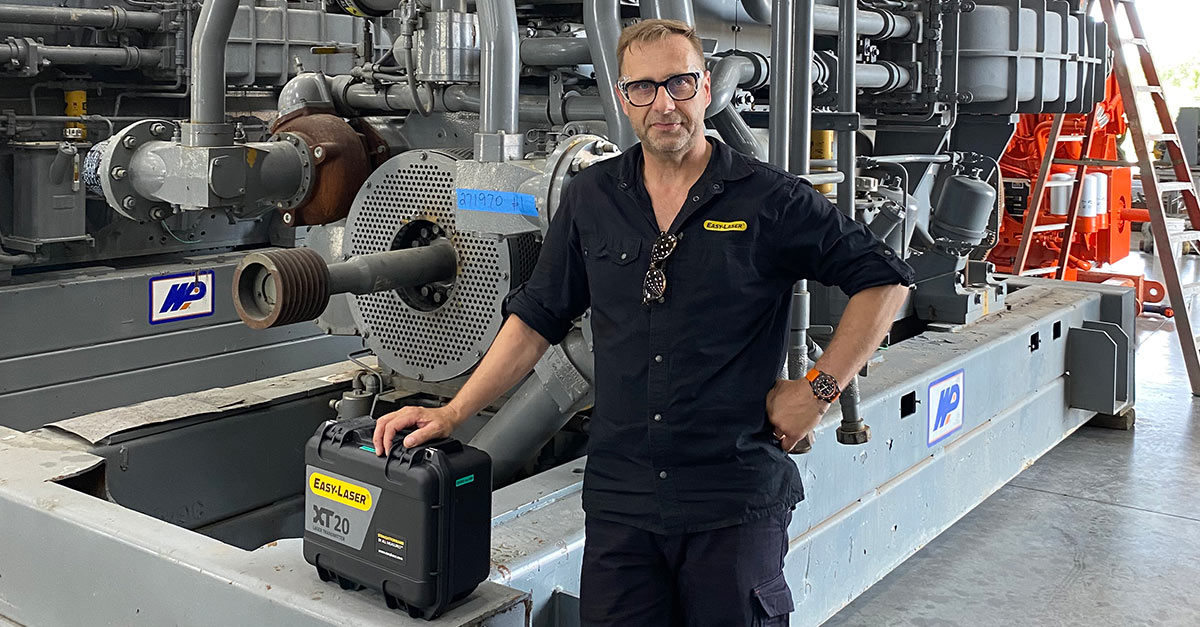The current system used for shaft alignment is a straight edge. This is relatively inaccurate since it depends on the judgement of the human eye. There are four ways in which the shaft alignment can differ from the ideal situation of being perfectly aligned; horizontal and vertical offset where the rotating axes are parallel but not colinear, and horizontal and vertical angularity, where the two shafts are meeting at an angle. It is extremely difficult to get all 4 within acceptable limits of accuracy when aligning with just a straight edge. Typically the shafts will be misaligned by about 0.5 mm using this technique. However, using laser alignment will typically reduce the offset to less than 0.1 mm and the angularity to less than 0.1 mm/100 mm (angularity is measured as a ratio of the gap between the shafts to their diameter).
This report will go on to show that improving these alignments will lead to savings in the maintenance budget and the power consumption of the plant.
Energy cost saving: Secondary plant
A laser alignment system was tested on pump MP421. The current drawn by the motor was measured at 12.2 Amps. After being re-aligned, this came down to 11.8 Amps, a 3.28% reduction in power, which equates to a saving of 0.288 kW or £77.58 (€107) over the course of 1 year (figures as per 2002).
The possible savings that could be made in Secondary are shown below. It has been assumed that the power consumption of all the machinery will reduce by only 1%, as this is likely to be the absolute minimum. As shown above, savings of 3.28% and perhaps higher may be achievable in some cases.
Power in kW
| Machines | Number | Minimum | Maximum |
| Pumps | 30 | 5 | 50 |
| Fans | 5 | 6 | 30 |
| Compressors | 4 | - | 250 |
| Plant size (Secondary) | 1180 kW |
| Cost of power | £0.0308 |
| Machine operating time | 24 x 365 = 8760 hours per year |
| Total cost of power in one year | 1180 x 0.0308 x 8760 = £318,373.44 |
| Power saving | 11.8 kW |
| Power cost saving | £3,183.73 (€4400) |
It has also been assumed that all the pumps have a power rating of 5kW. This will be lower than the actual value, since the pumps range from 5–50kW. Similarly, it has been assumed that the fans all have a power rating of 6kW. Making these assumptions has reduced the predicted savings that would be made to the absolute minimum.
N.B. Power saving for MP421 motor above was calculated using: Power = 3 x Current x Voltage
Repair cost saving: Secondary plant
This is comprised of both the savings made due to a reduction in the amount of spare parts used, and the reduction in labour necessary to carry out repairs. Typically, the lifetime of a bearing can be increased by a factor of eight, and couplings, shafts, and seals all benefit from reduced strain on the shaft.
Using straight edge alignment
| Number of machines in Secondary | 39 |
| Average repair costs per machine | £250 |
| Current MTBF | 6 months |
| Current repair costs | £19,500 per year |
Using laser alignment
| Achievable MTBF | 20 months |
| Possible repair costs | £5,850 per year |
| A yearly saving of | £19,500 - £5,850 = £13,650 (€18,800) |
The current and achievable MTBF, and the average repair costs quoted above, are from a report compiled by Pruftechnik Laser Alignment. This may seem to be a fairly large increase on the current 6 months, so again we should assume the worst case scenario. It should be noted that an increase of just one month on the MTBF to 7 months would give yearly repair costs of £16,714, a saving of £2,786.
Labour cost saving: Secondary plant
This is comprised only of the labour savings made due to the reduced time taken to carry out the shaft alignment.
Using straight edge alignment
| Time per alignment | 1 hour |
| Number of aligned machines | 39 |
| Frequency each machine is aligned per year | 1.5 times per year |
| Total number of alignments per year | 58.5 |
| Hours spent on alignment per year | 58.5 hours |
| Average labour cost | £23 per hour |
| Technicians required per alignment team | 2 |
| Cost per team | £46 per hour |
| Total yearly labour cost for alignment | £2691 |
Using laser alignment
| Time per alignment | 1 hour |
| Number of aligned machines | 39 |
| Frequency each machine is aligned per year | 1 time per year |
| Total number of alignments per year | 39 |
| Hours spent on alignment per year | 39 hours |
| Average labour cost | £23 per hour |
| Technicians required per alignment team | 2 |
| Cost per team | £46 per hour |
| Total yearly labour cost for alignment | £1794 |
| Total saving made per year | £2691 - £1794 = £897 |
Using Dial Test Indicators (DTIs)
It would seem that DTIs are a viable option, as they are more accurate than using a straight edge and are much cheaper than laser alignment. However, each machine alignment would take 4 hours, so the yearly labour costs for alignment would be £7176. They are also not as accurate as lasers, so would not reap such large savings to the repair and electricity costs.
Yearly savings: Secondary plant only
| Labour | £897 |
| Electricity | £3,183.73 |
| Repair | £2,786 |
| Total | £6,866.73 (€9500) |
This is the bare minimum that would be saved in the secondary plant. The electricity savings could be up to 3 times higher, since it was shown that savings of up to 3.28% could be made, but for the purpose of these calculations a value of 1% was used.
The savings made to the repair costs could be as much as £13,650 (€18,800) if the Mean Time Between Failure increased to the predicted 20 months rather than the 7 months used in these calculations. The laser alignment system would also be used on the entire site, and not just the secondary plant. The Secondary plant represented only 41% of the electricity usage across the site between September 2000 and August 2001. If similar savings can be made site-wide, electricity savings would therefore be 2.5 times the above value. Repair and labour savings would also increase accordingly.
Also left out of these calculations is the money saved through increased productivity, since downtime is reduced. The environmental implications of the site reducing its power consumption should also be considered, as all contributions help to keep the company in line with the Climate Change Levy.
Repaid within a year
In light of this, it can safely be stated that the cost of purchasing the Easy-Laser® alignment equipment would easily be repaid within a year, and it would continue to repay itself several times over in the coming years.



